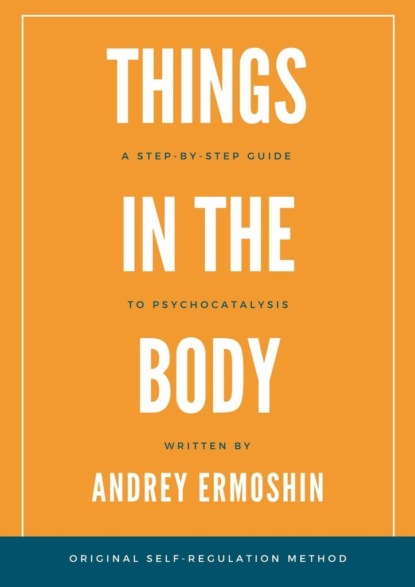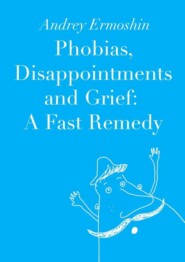По всем вопросам обращайтесь на: info@litportal.ru
(©) 2003-2024.
✖
Things in The Body
Настройки чтения
Размер шрифта
Высота строк
Поля
So, we can assume that the «book of good and evil’, which, according to the beliefs of Christians, angels and demons read on the Day of judgement and where all the sins and virtues of a persons are recorded, are they themselves, the bodies of their souls. SPT, using psychocatalysis, helps the patient «to read’ this book before it is read to them, and to change its content, to decide which pages are to be included
The periodic system of experiences
In the periodic system by D. I. Mendeleev, the qualities of some elements, such as sodium, potassium, rubidium, cesium, are similar. All these elements belong to the same category of alkali metals. However, they repeat their qualities on new registers, having a new core charge and a new number of electronic shells. The commonality of their characteristics is explained by the fact that at the external level of all these elements have the same number of electrons that can connect with other elements. The repeatability of the characteristics of experiences in the human body resembles the repeatability of the characteristics of chemical elements in periods. The experiences are found in strictly defined parts of the physical body. The experience of a seemingly close orientation, such as anger, irritation, anger, differ precisely in the fact that they occupy different “territories.” Irritation is concentrated in the temples, spite – in the chest, anger– in the stomach.
It is known that clinical psychotherapy differs, say, anxiety and fear. What is the criterion of their differentiation? Fear is objective, anxiety is objectless. In SPT, these states, which are distinguished by the patients themselves, show their non-identity in a special way. They are experienced at different levels of the body: fear – at the level of the abdomen (animal), worry – at the level of the heart (soul), anxiety – at the level of the forehead (head).
There are several such «rows.»
Multipolarity of experiences and dreams
In somatic analysis some dreams can be traced to an interesting phenomenon: the different parts of the dreams correspond to sensations in different areas of the body. As an example, there are some dreams of M., a young man, who was prone to drunkenness. He dreams that he is between two slopes of the mountains, in front of him there is a big pile of shit, and behind him there rolls a huge ball.
When asked about the feelings associated with each part of the dream, he replied as follows. The image of «the pile of shit’ corresponds to the feeling in the forehead. There is a plate of parabolic antenna there. This corresponds to his experience of self-concern: «I am aware of it, I understand it. I do not want to get there,» says the patient.
The feeling, associated with the image of «a huge rolling ball’, is experienced in the stomach. There is a huge heavy lump of fear.
The slopes of the mountains, as components of the frightening landscape, are «invested’ by the same charge as «the ball.»
Such observations allow us to admit that the state (which has arisen for internal reasons or in response to an external situation) can be experienced at several levels. For example, a person can simultaneously be anxious (at the level of the head), be worried (at the level of the heart) and be frightened (at the level of the abdomen). Three experiences of one situation – irritation in the temples, annoyance in the chest, anger in the abdomen. Three «images’ of dreams can correspond to them, as a kind of «triptych’ on a common topic.
This phenomenon of multipolarity of an experience can explain the fact that in dreams there are a lot of plot changes that are difficult to explain logically. Such changes can be «a roll call’, «a conference of the centers’ when each of them «reports the situation’ in its own way. The breaks in a dream can be associated with passing «the initiative.» Change of a plot means that «other channel’ begins to show: at first it was, say, the forehead that broadcast the program, then it was the turn of the stomach, and then heart began its program.
This is an alternative to the case where the influence of the centers is summed up and a «landscape’ is created with multiple characteristics, as in the case of M.
Greed and stinginess
It is an interesting fact how differently can a person be influenced by similar disasters, e.g., greed and stinginess. Greed is in the hands (the desire to “grab’ turns the hands into hooks), and stinginess is in the heart (the desire to hold the achieved turns the heart into a capsule). Perhaps such observations can give rich material not only to doctors, but also to teachers of ethics and morality, philologists, and other specialists.
The apparent duplication of concepts in language, according to topographic psychology, is justified by the fact that each word, if it is filled with real content (if its existence is given some life energy of native speakers), corresponds to a special place in the body of human consciousness. Despondency, grief, sadness, sadness, melancholy – it would seem synonymous, but the appeal to the feelings reveals their non-identity to each other (they receive energy from different zones, have different «weight’ and «color’).
The kaleidoscope of images
The perceived formations vary in:
– size – from a pinpoint to larger than the volume of the body
– consistency – from gaseous to rocky
– color – from white to black across the spectrum
– time of occurrence – from a few seconds to decades ago
– the part of the potential, absorbed by this formation – from 1 to 99%
– visualized images – lump, tangle, plate, plate, weights, radishes with a three-meter root and lush poisonous green foliage, jellyfish, octopus, spreading its black tentacles, hedgehog, dragon, bull, aircraft, etc.
Such data give the idea that descriptions of frogs in the abdomen, snakes in the heads, lumps in the throat, bags on the shoulders, etc., given by the unfortunate hypochondriacs, neurotics and psychotics, are not a sign of their madness or neurosis, but represent only one aspect of their state, experienced by almost everyone, including the so-called healthy people, though, not so meaningful and understandable for each of them.
Likewise, looking at the drawings of surrealists with their strange, at first glance, subjects (for example, the body in the form of a chest of drawers by Dali, or deformed bodies by Shemyakin), you come to the conclusion that they are a kind of version of realism, which is the realism of internal sensations (healthy or unhealthy is another question).
It also becomes clear which contours of inner feelings are transmitted in some modern toys and cartoon characters, usually distorted in specific way. What is «secretly’ felt with closed eyes, animators make «clear’ and visible with open eyes. So are the «good’ and «evil’ creatures with too developed chewing apparatus, blindfolded and with a shell on the back, like ninja turtles, etc.
“The layers’
A number of formations consists of “layer’” or composite elements. A woman with elongated proportions of the body (a sign of asthenic type), but quite energetic chin (epiradical) gained a huge amount of “mass’ in the back of her head (responsibility). Obviously, this state prevented her from doing “everything perfectly.” On deciding to calm down, she felt those sensations “departing’ down along her back. The wave passed. But there were some pebbles remained in that place.
«Three, five, ten, fifteen, twenty?»
«No, not twenty, just five.»
«Were they formed at the same time?»
«No, they were added in the course of life.»
«Have a look at one of them and determine when it was «laid’: days, weeks, months, years ago?»
«Five years ago, with the birth of a daughter.»
Likewise, it is possible to define all the aspects related to the formation of a particular element of the experience. It should be noted that patients do not always show interest in this. When one of the elements is determined, it becomes clear what it is about. The fate of such formations can be decided at one time. This woman decided that carrying the stones is not worth it, and she allowed them to roll away.
«Is it better without them?»
«A lot!»
«What are the liberated forces for?»
«For health.»
«Feel how it is happening.»
«I did.» The patient exhaled and opened her eyes. Those are all the issues about stones that remained to be solved.
In the chest there can be «layers’, a kind of «loads’ of experiences, for example, in the form of layers of mica.
A number of formations can be built on the type of «nesting dolls.» Outside there is a layer of younger experiences; deeper one is older and «harder.» Outside, for example, there is rubber, and inside there is iron.
Communicating vessel. The syndrome of “stone-tree’
As a rule, in the process of work, it is found out that the formation inside the body specifically violates the holistic state of the patient. The syndrome caused by the concentration of sensations of heat-heaviness in one of the zones of the body is usually dual. It is accompanied by its second component – the relative depletion of other areas of the body. In my opinion, this is a very significant observation.
In case of «overloaded head’, it can be assumed, that the feet «shrunk.» There is always a kind of combination of «overfilled’ and «empty’ zones. The image of the communicating vessel is quite suitable for the observed phenomena. The «stone’ in the chest de-energizes hands, the «spider’ or «octopus’ in the stomach takes strength from the legs, which can even shake from weakness, and from the head, which ceases to think.
In the therapeutic phase the process takes place in reverse order: calm in the abdomen leads to the filling of the periphery. We will return to this phenomenon later. Now it is important to keep in mind that if the patient talks about the «stony’ head and «wooden’ or «watery’ legs, then we are not talking about two independent phenomena, but about two sides of the same phenomenon.
The axis of interacting sensations can be in all directions: «hump’ on the back means «squeezed chest’ on the front (back-front), head like a snowball means ’dwarf’s legs’ (top-bottom), «a yokewith buckets’ on the right shoulder means «deprivation’ of the left thigh (diagonal interdependency).
Probably, the Chinese contemplate such phenomena as a violation of the balance between Yin and Yang. These syndromes are described as Biao-Li (surface-interior), Ge-Han (heat-cold), Shi Hu (fullness-emptiness), and treated them accordingly, by «heating the cold’, «cooling the heat’, «filling the emptiness’, or «deflecting the fullness’[31 - Luvsan Gawaa. Traditional and modern aspects of Eastern reflexology, Moscow: Nauka, 1990, p. 228.].







